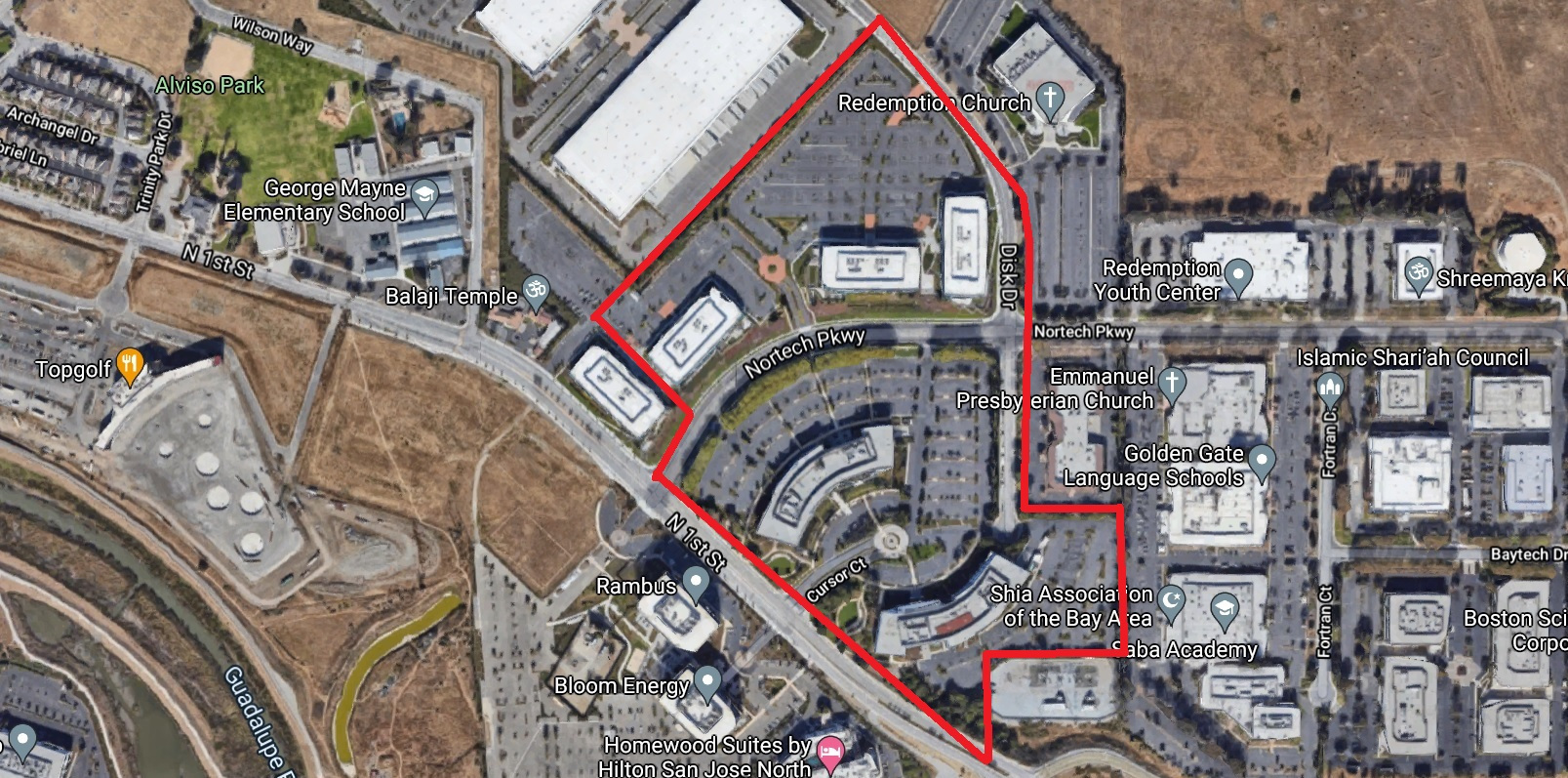Google plans emerge for big north San Jose green campus

Google has floated preliminary plans for a pedestrian-friendly tech campus that would bring north San Jose a lush and green office hub with features designed to emulate characteristics of the nearby estuaries.
The search giant intends to revamp a campus of five buildings near the corner of North First Street and Nortech Parkway in San Jose’s Alviso district.
Google will retain all five of the buildings and make big improvements within the new campus, which is being called Midpoint.
Among the major changes being proposed: A new pedestrian and bike bridge over Nortech Parkway that would create access between two of the buildings on one side of the parkway with three others on the other side of that street.
Yet the bike and pedestrian bridge is intended as more than a connection for the buildings, Google stated in a preliminary proposal submitted to city planners.
“The project proposes the construction of a new elevated walkway over Nortech Parkway to create one, unified campus as well as a more unified neighborhood,” Vini Bhargava, a project executive with Google’s real estate & workplace services organization, wrote in the proposal.
The new bridge would be accessible to Google’s workers as well as residents and visitors.
“The elevated walkway will be open to public use providing safe passage over the busy roadway for both campus employees as well as residents and community members visiting the surrounding civic amenities or the Don Edwards Wildlife Refuge to the north,” the Google proposal said.
Despite the significant changes that will effectively create a new campus, Google won’t build new office buildings or remove existing structures.
“Importantly, the proposed project does not include any change to the use, density, or physical envelope of any of the existing buildings located at the Midpoint Site,” Bhargava stated in the submittal.
All five of the buildings are flanked by vast surface parking lots. Sections of these asphalt surfaces would be transformed into open and natural areas as part of the creation of a green campus.
“The project intends to unify the different buildings at the Midpoint Site through a cohesive and coordinated landscaping and site circulation plan, with a particular emphasis on pedestrian and bike access as well as outdoor gathering and meeting areas to serve on-site employees,” the Google plan said.
Portions of the existing parking and concrete surfaces would be resculpted into landscaping and walking areas. The green areas would complement the nearby San Francisco Bay, Google said.
“Enhanced wildlife habitat and pollination opportunities, as well as natural cooling features through shade trees and outdoor shade structures nestled within this natural environment” would be key features of the new campus, Bhargava wrote in the proposal.
The five buildings together total 708,600 square feet. That means the offices could potentially accommodate 2,800 to 3,500 Google workers.
Google fully intends to occupy the five office buildings, a company spokesperson said. Google bought the five big buildings in multiple transactions in recent years.
“Some real estate observers have asserted that Google is land banking,” said Bob Staedler, principal executive with Silicon Valley Synergy, a land-use consultancy. “I don’t believe that is the case at all. I think they will occupy the buildings.”
Google’s Alviso complex would be one of several major hubs in San Jose for the tech titan.
Notably, the company is developing Downtown West, a mixed-use neighborhood of offices, homes, shops, restaurants, hotel facilities, cultural centers, and amenities sites on the western edges of downtown San Jose where Google could employ up to 25,000 workers.
“They are a plan-driven and results-focused organization,” Staedler said. “Their real estate dealings have shown that time and time again.”
Google also hopes to reduce single-vehicle trips to the campus with a commuter shuttle service, carpools, transit passes, and bicycle parking. The nearest light rail stops are at the corner of North First Street and Tasman Drive. The closest BART stations are in Milpitas and San Jose’s Berryessa district.
“The proposed improvements will be environmentally beneficial by facilitating enhanced bicycle and pedestrian connectivity, increasing landscaped areas, allowing for improved on-site stormwater management, providing for natural cooling of the site through the provision of shade trees, and reduction of heat-producing asphalt expanses,” Google stated in the preliminary plans.

